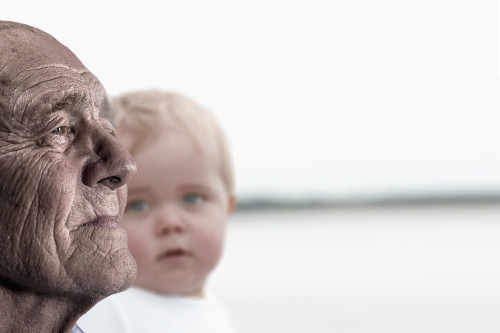Biblical Anthropology: Everything Together (2)
We’re continuing our whirlwind review from last time. The next topic we studied was “the Image” – otherwise known in Latin as the Imago Dei.

We were created in God’s image – the animals were not. We’re very special. And as we learned, this is a reality that persists even after the Fall. Even in sin, we still maintain an incredible value because of the imago dei. Every human being.
We also learned that human want to change this image – they “exchanged the glory of the immortal God for images resembling mortal man and birds and animals and creeping things” (Romans 1:23). Instead of becoming more like the true God, whose image we bear, we became more like blind and powerless idols.
But Jesus Christ came to show us the true image of God – the exact image – as God in the flesh.
Long ago, at many times and in many ways, God spoke to our fathers by the prophets, but in these last days he has spoken to us by his Son, whom he appointed the heir of all things, through whom also he created the world. He is the radiance of the glory of God and the exact imprint of his nature, and he upholds the universe by the word of his power. After making purification for sins, he sat down at the right hand of the Majesty on high, having become as much superior to angels as the name he has inherited is more excellent than theirs.
Hebrews 1:1-4
That’s the story of Christmas! Everything in time and space truly matters, and has a purpose, because God Himself entered into His creation. And now we see the true and pure Image of God, sinless. And those who put their faith in Christ are being transformed into His image. “For those whom he foreknew he also predestined to be conformed to the image of his Son…” (Romans 8:29). “And we all, with unveiled face, beholding the glory of the Lord, are being transformed into the same image from one degree of glory to another. For this comes from the Lord who is the Spirit” (2 Corinthians 3:18).
From there we went on to talk about God’s design for the family. According to the Lord Jesus, God’s pattern for the man and the woman and marriage and children in Genesis is the pattern that we are to follow today.
When the man rebelled against God, human beings began to experience shame and confusion about their own bodies. This is part of the fallen world. But God has given us commandments for the family and its gender roles. Those roles are different for men and for women.
We all experience sin and brokenness in this area. But God gives forgiveness and healing to those who turn to Him.
All of this information about the man and the woman and the image of God also related to our next study, “The Borders of Life”. We went through the various types of murder that the Bible talks about, relating them somewhat to modern law. We talked about the attacks that we’re seeing on life today, especially on the “borders” – the murder of babies in the womb (often called “abortion”), and the murder of our precious seniors through negligence and euthanasia.
One of the most important parts of that lesson for me, apart from some questions about specific kinds of murder, was the Bible’s teaching on suffering and death.
In Scripture, death is the enemy. A consequence of sin. Yes, for a Christian, death is a path to being with the Lord. But this comes at a time chosen by God, not by us. We are here on earth to serve as long as God permits, even if we can only serve through brief moments of prayer on our sickbed.
Suffering, for us, is full of purpose. It is not something to be avoided at all costs. In fact, we are even commanded to suffer for Christ. “Share in suffering as a good soldier of Christ Jesus” (2 Timothy 2:3). Listen to Romans 5 –
Not only that, but we rejoice in our sufferings, knowing that suffering produces endurance, and endurance produces character, and character produces hope, and hope does not put us to shame, because God’s love has been poured into our hearts through the Holy Spirit who has been given to us.
Romans 5:3-5
Every life has purpose and value, even a life that is deep in suffering. “For this light momentary affliction is preparing for us an eternal weight of glory beyond all comparison…” (2 Corinthians 4:17).
Of course it’s impossible to delve back into all these topics again – but that’s a summary of “The Image”, “The Family”, and “The Borders of Life”. Remember to check here for a more detailed discussion. We’ll continue starting with part 6 next time!
